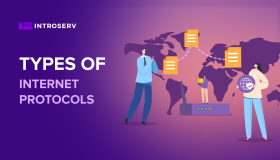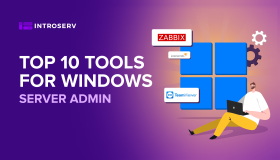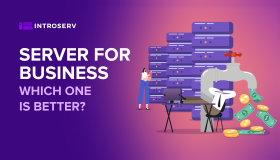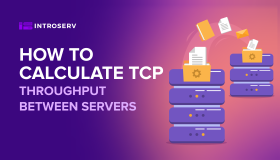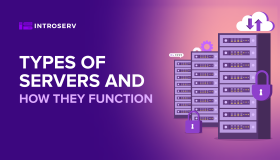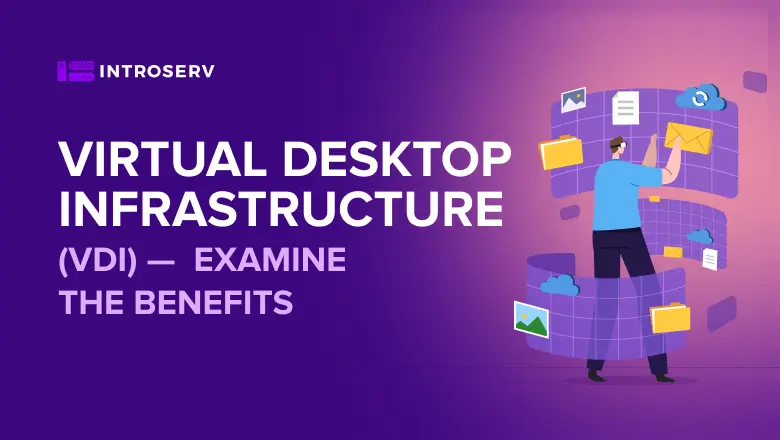
Virtual Desktop Infrastructure (VDI): examine the benefits
What is VDI (Virtual Desktop Infrastructure)?
Virtual Desktop Infrastructure is a virtualization technology that centralizes the creation and management of virtual desktops. These virtual desktops are hosted on a centralized server and accessible to remote users via the internet. With VDI you can connect to your individual desktop from any device, regardless of the operating system or hardware specifications.
How does VDI work?
VDI employs a "host-server" architecture, where a central server hosts multiple virtual machines (VMs), each containing a separate desktop environment. These VMs are accessed by individual users remotely, using thin client devices or traditional PCs connected to the VDI infrastructure.
The underlying architecture of VDI involves three primary components: the hypervisor, the virtual desktops, and the connection broker.
Hypervisor
At the core of VDI lies the hypervisor, a software layer that enables the creation and management of multiple virtual machines on a single physical server. The hypervisor, also referred to as the Virtual Machine Monitor (VMM), partitions the server's resources, including CPU, memory, and storage, among the virtual desktops. This ensures that each virtual machine operates independently, providing users with a secure and isolated environment.
Virtual Desktops
The virtual stations within a VDI configuration are distinct instances of operating systems running on virtual machines. These virtual desktops are generated and overseen by the hypervisor, which allocates resources to each desktop according to user needs. Every user is granted a dedicated virtual desktop, creating a personalized computing environment encompassing their applications, settings, and files.
Connection Broker
The connection broker acts as an intermediary between the end-user devices and the virtual desktops. It authenticates user credentials, manages sessions, and guarantees that individuals are connected to the appropriate virtual desktop based on their access privileges. The connection broker plays a crucial role in load balancing, optimizing resource allocation, and maintaining a seamless user experience.
Benefits of VDI
Implementing VDI brings numerous benefits to organizations and remote workers alike. Here are some of the key advantages:
- Enhanced Accessibility: With VDI, users can access their desktops from any location, using any device. This flexibility allows remote workers to be productive while on the go, without being tied to a specific location or device.
- Improved Security: VDI provides a more secure environment compared to the typical approach of having physical computers for each user within an organization. All data resides on the server, reducing the risk of data breach even from lost or stolen devices. Additionally, VDI allows for centralized security measures, such as access controls and data encryption.
- High Scalability: VDI offers scalability, making it easy to accommodate growing remote workforces or changing business needs. New virtual machines can be created quickly, and resources can be allocated or scaled down as required. This agility ensures that organizations can adapt to evolving circumstances without disrupting productivity.
- Simplified IT Management: Managing a large number of physical desktops can be a formidable task for IT departments. VDI simplifies the process by centralizing desktop maintenance, updates, and troubleshooting. This not only lightens the IT administrator's load but also streamlines processes for increased efficiency.
- Cost Savings: Implementing VDI can lead to significant cost savings in the long run. Using virtual machines instead of physical desktops, organizations diminishes hardware costs, energy consumption, and maintenance expenses. Additionally, VDI allows for a longer lifespan of hardware, as virtual machines can be easily migrated to new servers when needed.

Limitations of VDI:
While Virtual Desktop Infrastructure offers a range of benefits, it's important to acknowledge VDI’s limitations:
- Resource Intensive: Running multiple virtual desktops strains server resources, potentially causing performance issues and requiring significant hardware investments.
- Complex Implementation: Setting up VDI involves intricate tasks like configuring hypervisors and profiles, demanding specialized IT skills.
- Security Concerns: VDI boosts security but poses risks like central server breaches exposing vast sensitive data. Managing updates and patches becomes crucial.
- Cost Considerations: Deploying an on-premises VDI involves substantial ongoing expenses, including setup, maintenance, upgrades, and a dedicated IT team.
VDI vs. Desktop Virtualization
The distinction between VDI and traditional desktop virtualization plays a pivotal role in shaping deployment strategies and user experiences. Let's delve into the specific differences that set these approaches apart.
Desktop Virtualization:
Desktop virtualization entails the execution of a virtual machine on an individual desktop or laptop. This method is particularly well-suited for personal use or smaller-scale deployments. Users leverage virtualization for localization of their operating system and applications within a controlled environment, offering isolation from the host system.
However, desktop virtualization's domain of influence is limited to individual machines, making it more apt for scenarios where customization and local control are paramount. It serves the needs of a single user or a handful of users without the need for a centralized infrastructure.
VDI (Virtual Desktop Infrastructure):
VDI, on the other hand, operates within a distinctly different paradigm. It revolves around a centralized infrastructure that distributes virtual desktops to end-users over a shared hosting environment. This architecture affords high scalability, enhanced security, and advanced management capabilities. As a result, VDI is an optimal choice for enterprise-grade deployments and organizations necessitating seamless remote workforce integration.
Types of VDI
There are two main types of VDI deployments: persistent and non-persistent.
- Persistent VDI: Each user is assigned a dedicated virtual machine that retains their personalized settings, files, and applications, and data, even after logging out. Any changes you make to the desktop or documents are saved and updated within the virtual machine. This type of deployment is ideal for users who require a high degree of customization and persistent storage.
- Non-Persistent VDI: Users share virtual machines, and any changes made to the desktop are discarded once the user logs off. This means that every time a user logs in, they start with a clean slate, as if using a brand new machine. This approach offers greater scalability and resource optimization since virtual desktops are reset after each session. Non-persistent VDI is commonly used in environments where users have similar tasks and do not require long-term data storage.
Use Cases of VDI
VDI finds applications in various industries and scenarios. Here are some common use cases:
- Remote Work: VDI is particularly valuable for enabling remote work. Employees can access their virtual desktops from home or any other location, fostering seamless collaboration and consistent productivity.
BYOD (Bring Your Own Device): With VDI, organizations can implement a BYOD approach, enabling employees to use personal devices for work. Virtual desktops can be securely accessed from any device, maintaining data integrity and security. - Temporary Employees or Testing Purposes: VDI is beneficial for organizations that frequently employ contract workers or temporary staff. Virtual desktops can be quickly provisioned, customized, and deprovisioned. It simplifies the process of providing temporary access to resources without the need for dedicated hardware.
- Cost-Conscious Organizations: For organizations with budget constraints, VDI offers cost savings by reducing hardware expenses, energy consumption, and maintenance costs. It allows organizations to optimize resource utilization and scale their infrastructure based on demand, facilitating efficient use of resources.
- High-Security Environments: Industries such as healthcare, finance, and government require stringent security measures. VDI provides a secure environment by centralizing data and implementing access controls to guarantee compliance with industry regulations.
Simplify Your VDI Experience with INTROSERV
Elevate your organization's efficiency and productivity with INTROSERV's desktop virtualization solutions. We offer a cost-effective and user-friendly approach to VDI that grants you seamless access to essential applications.
Our proven process eliminates the complexities of VDI deployment, so you can focus on core business functions as we handle technical intricacies. Experience a smooth and swift transition to a virtualized workspace.
Scale your business effortlessly. You can easily expand alongside your growing workforce, ensuring that your organization's performance and accessibility remain uninterrupted.
Our dedicated support team is here to assist you at every step. We provide professional VDI support from implementation to ongoing management.
Explore the benefits of VDI with INTROSERV. Contact us today and enhance your organization's efficiency using the capabilities of virtualization.



